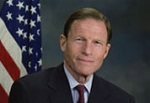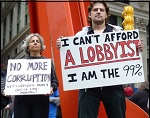-
Recent Posts
- Trump’s “Big Beautiful Bill” Is a Grotesque Giveaway to Fossil Fuel Billionaires While Adding $3.3 Trillion to Nation’s Debt
- Senator Chris Murphy Charges that Trump “Has Opened a Channel for Bribery”
- Congressman Casten: Trump’s Assault on the Rule of Law Is Causing Capital Flight Out of U.S. by Foreign Investors
- Trump’s Approval Rating Drops to 80-Year Low; IMF Says U.S. Tariffs Now Exceed the Highs During the Great Depression
- Nasdaq Has Lost More than 3,000 Points Since Trump’s First Full Day in Office in 2025; the Pain Has Barely Begun
- The Bond Crisis Last Week Was a Global No-Confidence Vote in U. S. President Donald Trump
- Trump’s Tariff Plan Guts $5 Trillion in Stock Value in Two Days; Senator Warren Calls for Emergency Action Before Markets Open on Monday
- Trump’s Attacks on Big Law, Universities, and the Media Have a Common Goal: Silence Dissent Against Authoritarian Rule
- Trump Administration Gives All Clear to Laundering Money through Shell Companies and Bribing Foreign Officials
- Four Megabanks on Wall Street Hold $3.2 Trillion in Uninsured Deposits – Which May Explain Senator Schumer’s Pivot to the GOP to Stop a Government Shutdown
- Here’s What Came Crashing Down Yesterday for Trump’s “Genius” Guy, Elon Musk: Tesla Stock, Access to Twitter (X), His Years of Secret Calls with Putin
- After Banning the Associated Press, Trump Is Now Targeting Specific Journalists That He Wants to See Fired
- Closely Watched Atlanta Fed Model Predicts Negative U.S. Growth in First Quarter
- Trump’s Gangster Diplomacy Makes Front Page Headlines Around the Globe
- Who Benefits Alongside Elon Musk If He Succeeds in Killing the CFPB: the Megabanks on Wall Street that Underwrite His Tesla Stock Offerings
- In Trump 1.0, the State Department Used Taxpayer Money to Publish a Book Elevating Elon Musk to a Superhero; It Was Funded by USAID, the Agency Musk Wants to Quickly Shut Down
- News Host Joy Reid Raises Threat of Trump Selling U.S. to Putin; Ten Days Later Her Show Is Cancelled
- Elon Musk’s DOGE Appears to Be Violating a Court Order; It Has Taken Down Hundreds of YouTube Videos that Educate Americans on How to Avoid Being Swindled
- Barron’s Releases Audio of Jamie Dimon Cursing Out His Workers at a Town Hall, as Dimon Plans to Dump Another One Million JPM Shares
- There’s One Federal Investigative Agency that Neither Trump nor Elon Musk Can Touch: It Just Opened an Investigation into DOGE
- Elon Musk’s Companies Were Under Investigation by Five Inspectors General When the Trump Administration Fired Them and Made Musk the Investigator
- Donald Trump Gives the Greenlight to Goldman Sachs and JPMorgan Chase to Return to Bribing Foreign Officials
- After Tech Geeks Built a Back Door to Loot Billions from FTX, Republicans Refuse to Investigate What Elon Musk’s Tech-Squad Did Inside the U.S. Treasury’s Payment System
- Former Prosecutor, Now U.S. Senator, Informs Tesla That CEO Musk May Be Violating Federal Law and to “Preserve All Records”
- Trump’s Hedge Fund Guy Is Now Overseeing the U.S. Treasury, IRS, OCC, U.S. Mint, FinCEN, F-SOC, and the Consumer Financial Protection Bureau
- As Elon Musk Begins Shutting Down Payments to Federal Contractors, a Strange Money Trail Emerges to His Operatives Inside the U.S. Treasury’s Payment System
- JPMorgan Chase Charged by Yet Another Internal Whistleblower with Cooking the Books
- We Asked Google’s AI Search Model, Gemini, Questions About the Fed and Wall Street Megabanks: It Got the Answers Dead Wrong
- With Trump and Melania’s Crypto Coins Likely to Raise Legal Challenges, Why Didn’t Trump Fire the SEC’s Inspector General in His Purge of IGs?
- Fossil Fuel Industry Could End Up Paying Tens of Billions for LA Wildfires and Deceiving the Public on Climate Change for Decades
- It’s Being Called the Biggest Grift by a President in U.S. History: Trump and First Lady Launch their Own Crypto Coins
- Trump Plans to Install a Fracking CEO to Head the Energy Department and Declare a National Emergency on Energy to Gain Vast Powers
- Fossil Fuel Money Played a Role in the Los Angeles Fires and the Push to Install Pete Hegseth as Secretary of Defense
- When It Comes to Wealth Retention in Retirement, Concrete May Be the New Gold
- Wall Street Watchdog Warns “Clock Is Ticking on a Coming Catastrophic Financial Crash”
- Wall Street Is Sending the Same Message to Americans on Fossil Fuel Financing that It Sent on Cigarettes: Drop Dead
- In a Six-Week Span, this Dark Pool with a Curious Past Traded 3.7 Billion Shares
- Wall Street’s Lobby Firm Hired Eugene Scalia of Gibson Dunn to Sue the Fed for Jamie Dimon
- Postmaster General Louis DeJoy Made $561,051 in Compensation in 2024, as Mail Costs Spiked and Delivery Deteriorated
- Fed Chair Jay Powell Sends a Bold Message to Trump and Tanks the Dow by 1123 Points
- The Head of Fixed Income at T. Rowe Price Makes the Scary Case for the 10-Year Treasury to Spike to 6 Percent
- $663 Billion in Cash Assets Have Gone Poof at the Largest U.S. Banks
- Donald Trump to Ring Bell at New York Stock Exchange Today as Hit List Posters Appear in Manhattan Targeting Wall Street CEOs
- Trump Has a Slush Fund to Prop Up the Dollar – Will He Use It to Prop Up Bitcoin Instead?
- A CEO Assassination; a Billionaire Heiress/NYPD Commissioner; a Secret Wall Street Spy Center – Here’s How They’re Connected
- Despite More than 1600 Tech Scientists Signing a Letter Calling Crypto a Sham, Trump Names a Crypto Cheerleader for SEC Chair
- The Fed Rings a Warning Bell: Hedge Funds and Life Insurers Are Reporting Historic Leverage
- Trump’s Nominee for FBI Director, Kash Patel, Has Businesses Financially Intertwined with Trump
- Donald Trump Is at Risk of Getting Named in a Fossil Fuels Conspiracy Lawsuit
- Trump Is Having Difficulty Getting a Lawyer to Accept the Nomination for SEC Chair: Here’s Why
Search Results for: JPMorgan
The DOJ’s Incestuous Relationship with Jamie Dimon Is Captured in a Graphic from an Historic Lawsuit

By Pam Martens and Russ Martens: January 18, 2024 ~ On February 10, 2014, the non-profit watchdog, Better Markets, took a bold and historic action. It filed a federal lawsuit against the highest law enforcement agency and officer in the United States – the U.S. Department of Justice and the man who sat at its helm, Attorney General Eric Holder. The lawsuit challenged a $13 billion out-of-court settlement that had been agreed to by the Justice Department and the Wall Street mega bank, JPMorgan Chase, over its sale of toxic mortgages. Better Markets wrote on its website that this was at the time “The largest settlement in U.S. history from a single entity by more than 300%” and that it “granted JP Morgan blanket civil immunity for years of alleged, but undisclosed, pervasive, egregious and knowing fraudulent and illegal conduct that contributed to the 2008 financial crash and the worst economy since the … Continue reading
Everything that’s Dangerous about U.S. Banks Today in One Highly Readable Book

By Pam Martens: January 17, 2024 ~ Anat Admati, Professor of Finance and Economics at Stanford Graduate School of Business, and German economist Martin Hellwig, have performed a public service to all Americans with their newly released, updated and expanded book The Bankers’ New Clothes: What’s Wrong with Banking and What to Do about It. It puts the interlocking web of corruption that is mistakenly referred to as the U.S. banking system into a pristinely documented and highly readable book. Let us first explain those men without pants on the book jacket. That provocative graphic comes from the storyline in the Hans Christian Andersen tale “The Emperor’s New Clothes.” Tailors offer to make the emperor magical clothes that will be visible only to smart people and invisible to the stupid and unfit. When the emperor’s ministers go to inspect the clothes, they see nothing, but they are fearful of being called … Continue reading
Jamie Dimon Hires Dodd-Frank Hatchet Man to Weigh Suing the Fed Over Proposed Capital Rules

By Pam Martens and Russ Martens: January 16, 2024 ~ Jamie Dimon is the Chairman and CEO of the largest federally-insured, taxpayer-backstopped bank in the United States, JPMorgan Chase. Through much of Dimon’s tenure, JPMorgan Chase has also been designated as the riskiest bank in the United States by its regulators. And despite its unprecedented criminal history, the U.S. Department of Justice keeps handing the bank deferred-prosecution agreements or non-prosecution agreements with the casualness of a carnival barker tossing out penny candy. Dimon’s Board of Directors is too compromised itself to reform the bank and fire Dimon. (See here, here and here.) So all that remains as a potential restraint on this criminally-inclined banking behemoth is the bank’s federal regulators. On July 27 of last year, the Federal Reserve, FDIC and Office of the Comptroller of the Currency (OCC) – JPMorgan Chase’s bank regulators — released a proposal to require higher capital levels … Continue reading
Bill Dudley, Former Kingpin of Darkness at the New York Fed, Now Urges Transparency at the Fed

By Pam Martens and Russ Martens: January 4, 2024 ~ William (Bill) Dudley served as President of the New York Fed from 2009 to 2018. (He was previously an executive at Goldman Sachs.) During Dudley’s tenure at the New York Fed, it secretly oversaw the largest and darkest bailout of Wall Street mega banks in global banking history. A Bloomberg News reporter, the late Mark Pittman, battled in court for years to get the details of those bailouts released to the public. Today, the former kingpin of darkness at the New York Fed, Bill Dudley, had the audacity to pen an opinion column for Bloomberg News, urging – wait for it – more transparency at the Fed. The ironic title of Dudley’s column is (paywall): “If Only We Knew the Problems Facing America’s Banks.” (We do. See Federal Agency Study Contradicts Fed Chair: Finds Banking System Is Ripe for Another Crisis and … Continue reading
Mainstream Media Is Avoiding the Big Story on Jeffrey Epstein and Sealed Court Documents

By Pam Martens and Russ Martens: January 3, 2024 ~ Over the past week, more than a dozen of the biggest mainstream news outlets have published articles about the possibility of scandalous news breaking this week from the unsealing of documents in a federal court case involving the sex trafficker of minors, Jeffrey Epstein. Typically, responsible news outlets wait for the actual news to break before hyping the possibility of it breaking. At 5:59 a.m. this morning, Newsweek updated the story as follows: “Some on social media are speculating that the public disclosure of more than 150 names associated with the late sex offender Jeffrey Epstein has been delayed. “Judge Loretta A. Preska signed an order on December 18 for the public release of the identities of more than 150 people mentioned in court documents from a now-settled 2015 civil lawsuit filed by Virginia Giuffre that centered on allegations that Epstein’s associate and former girlfriend Ghislaine Maxwell facilitated her sexual … Continue reading
Federal Agency Study Contradicts Fed Chair: Finds Banking System Is Ripe for Another Crisis and Remains “Fragile and Uncertain”

By Pam Martens and Russ Martens: January 2, 2024 ~ Following the second, third and fourth largest bank failures in U.S. history in the spring of last year, Federal Reserve Chair Jerome Powell gave his semiannual monetary policy report to the House Financial Services Committee and the Senate Banking Committee in June. During both appearances, Powell stated the same thing: “The U.S. banking system is sound and resilient.” But according to a report last week from the federal agency whose mandate is to keep federal regulators apprised of the true condition of the U.S. banking system, it is actually ripe for another crisis and its condition is “fragile and uncertain.” The federal agency whose researchers are taking the latter position is the Office of Financial Research (OFR). The agency was created under the Dodd-Frank financial reform legislation of 2010 to prevent another 2008-style financial crisis by providing federal regulators with ongoing analysis and … Continue reading
A Big Picture Look at Our Major Wall Street Corruption Stories of 2023

By Pam Martens and Russ Martens: December 28, 2023 ~ The year 2023 will go down in U.S. banking history as the year in which the fastest bank runs in U.S. history occurred, producing the second, third and fourth largest banking failures in U.S. history in the span of seven weeks. Losses of more than $32 billion from these failed banks hit the Federal Deposit Insurance Fund (FDIC). Adding to the regulatory hubris, the largest and riskiest bank in the U.S., JPMorgan Chase, was allowed by its compromised regulators to become even riskier by gobbling up the failed First Republic Bank while JPMorgan Chase got an unexplained $50 billion 5-year loan from the FDIC at an undisclosed interest rate to sweeten its purchase of the failed bank. And, what good is a banking crisis if the Fed can’t pony up yet another bank bailout fund, this time with loans of up to … Continue reading
The DOJ Took More than Two Years to Answer a FOIA on Its Criminal Division Head; Three Days Before Christmas 2023 We Got a Troubling Disclosure

By Pam Martens and Russ Martens: December 26, 2023 ~ On July 20, 2021 the U.S. Senate voted 56-44 to confirm Kenneth Polite (pronounced Po-leet) to head the most powerful criminal law enforcement office in the United States, the Criminal Division of the U.S. Department of Justice. The vetting of this candidate immediately raised red flags at Wall Street On Parade. Despite Polite owing more than $1.5 million in debts according to his financial disclosure form and public mortgage records; paying over 18 percent interest on an outstanding balance on a credit card; 19.99 percent interest on a personal loan; and then accepting a job where his income was going to be slashed by approximately 77 percent – not one Senator on the Senate Judiciary Committee asked a single question about Polite’s unusual financial obligations during his confirmation hearing on May 26, 2021. In addition, Polite was coming from the law firm of Morgan, … Continue reading
From 2010 through 2014, the Senate’s Permanent Subcommittee on Investigations Focused on Crime on Wall Street; Since Then – Head in the Sand

By Pam Martens and Russ Martens: December 19, 2023 ~ From 2010 through 2014, the most intractably corrupt industry in America – Wall Street – was the perpetual focus of the Senate Permanent Subcomittee on Investigations. The late Senator Carl Levin (D-MI) Chaired that Subcommittee throughout that span of time. Then Levin retired from the Senate in January 2015 and Wall Street’s name disappeared from hearings of that critical Subcommittee from 2015 through 2023 – a span of nine years. Wall Street did not become less corrupt from 2015 through 2023 to warrant it falling off the hearing schedule of the Senate’s Permanent Subcommittee on Investigations. In fact, Wall Street became more corrupt. Financial watchdog, Better Markets, wrote the following in its detailed report in October on Wall Street mega banks’ unending crime spree: “For years, Better Markets has been tracking the enforcement actions against the nation’s six largest banks (the … Continue reading
Three Wall Street Mega Banks Hold $157.3 Trillion in Derivatives – That’s $56.7 Trillion More than the Entire World’s GDP Last Year

By Pam Martens and Russ Martens: December 18, 2023 ~ At recent Congressional hearings on federal bank regulators’ newly proposed rules to force the largest banks in the U.S. to hold more capital against their riskiest trading positions (so that taxpayers aren’t on the hook for more bailouts), the banks and their sycophants holding Senate and House seats made it sound like it’s the American farmers who will be hurt because the derivatives they use to hedge against crop failures or price swings in their crops will become more expensive.. We knew this was a completely bogus argument because the latest data from the U.S. Department of Agriculture indicates that “agriculture, food, and related industries contributed roughly $1.264 trillion to U.S. gross domestic product (GDP) in 2021….” In other words, U.S. farmers need to hedge less than $2 trillion while just three mega banks on Wall Street were holding $157.3 trillion … Continue reading

